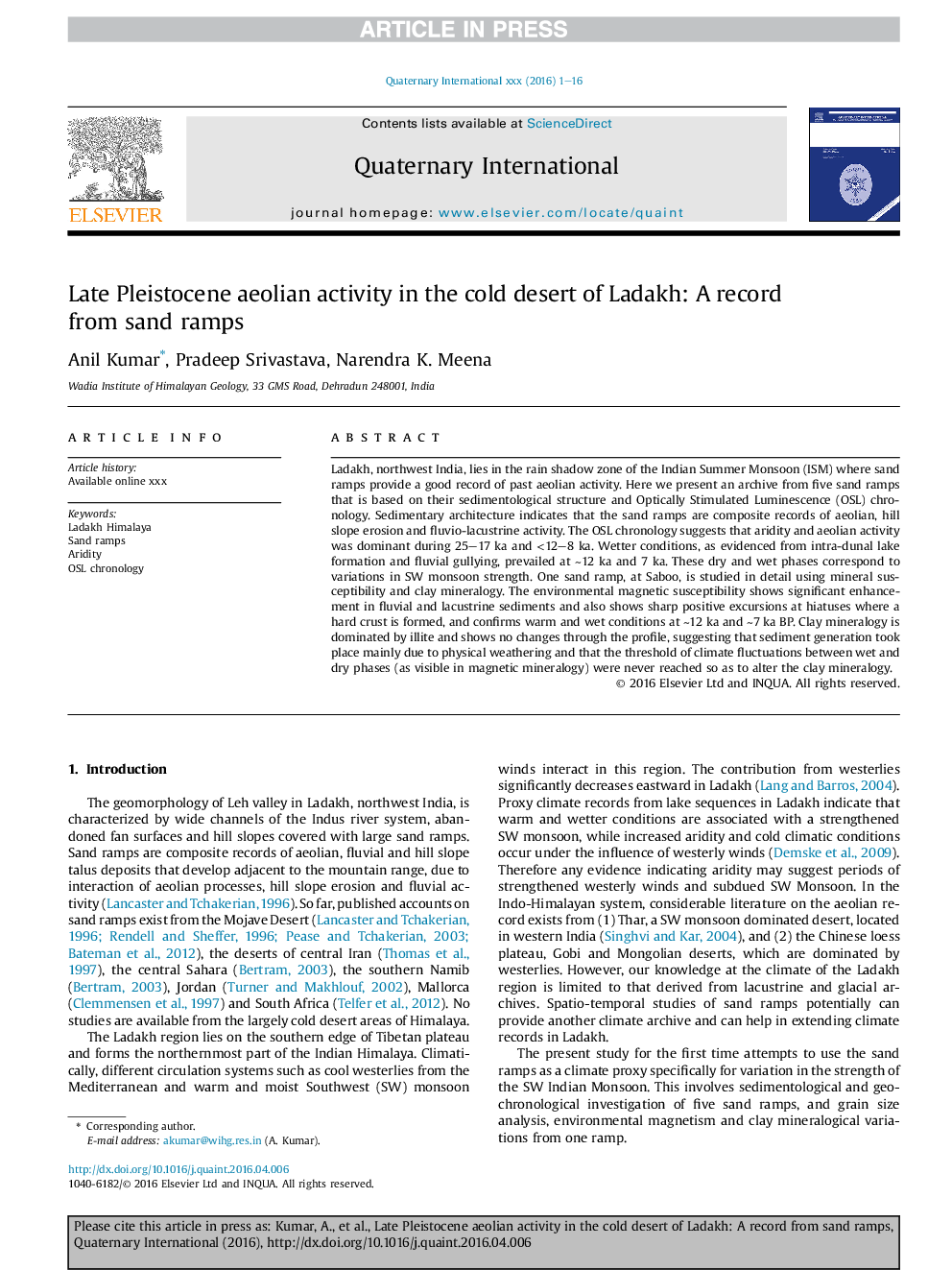| Article ID | Journal | Published Year | Pages | File Type |
|---|---|---|---|---|
| 5113123 | Quaternary International | 2017 | 16 Pages |
Abstract
Ladakh, northwest India, lies in the rain shadow zone of the Indian Summer Monsoon (ISM) where sand ramps provide a good record of past aeolian activity. Here we present an archive from five sand ramps that is based on their sedimentological structure and Optically Stimulated Luminescence (OSL) chronology. Sedimentary architecture indicates that the sand ramps are composite records of aeolian, hill slope erosion and fluvio-lacustrine activity. The OSL chronology suggests that aridity and aeolian activity was dominant during 25-17Â ka and <12-8Â ka. Wetter conditions, as evidenced from intra-dunal lake formation and fluvial gullying, prevailed at â¼12Â ka and 7Â ka. These dry and wet phases correspond to variations in SW monsoon strength. One sand ramp, at Saboo, is studied in detail using mineral susceptibility and clay mineralogy. The environmental magnetic susceptibility shows significant enhancement in fluvial and lacustrine sediments and also shows sharp positive excursions at hiatuses where a hard crust is formed, and confirms warm and wet conditions at â¼12Â ka and â¼7Â ka BP. Clay mineralogy is dominated by illite and shows no changes through the profile, suggesting that sediment generation took place mainly due to physical weathering and that the threshold of climate fluctuations between wet and dry phases (as visible in magnetic mineralogy) were never reached so as to alter the clay mineralogy.
Keywords
Related Topics
Physical Sciences and Engineering
Earth and Planetary Sciences
Geology
Authors
Anil Kumar, Pradeep Srivastava, Narendra K. Meena,
